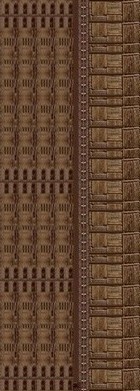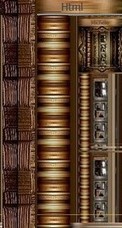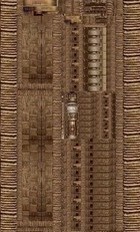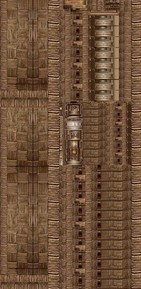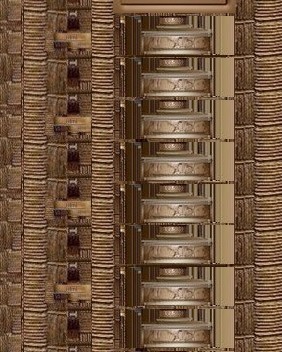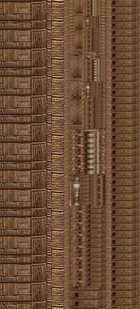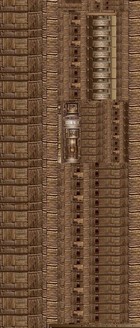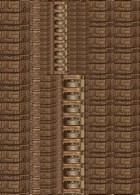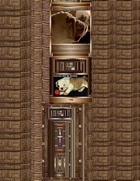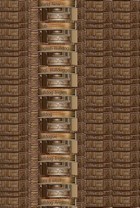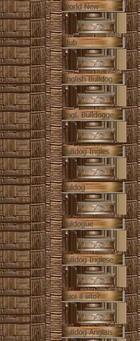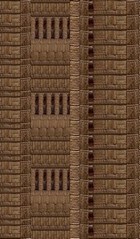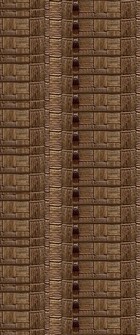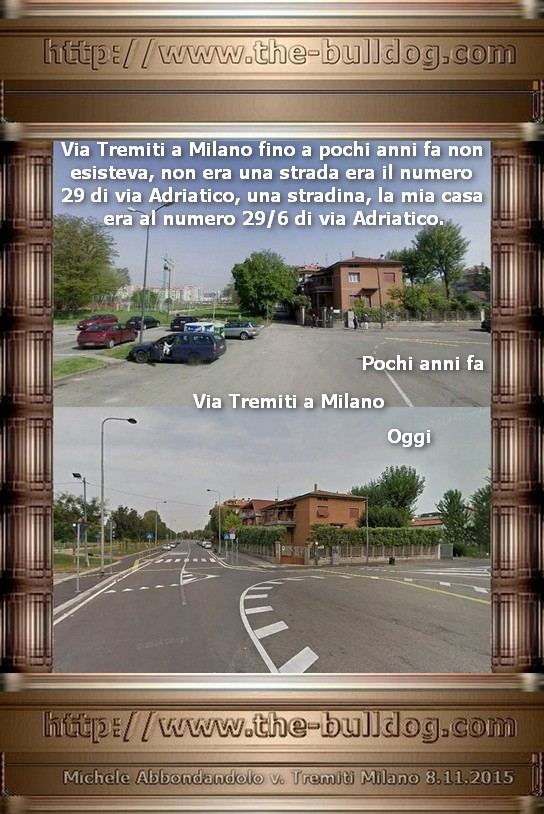


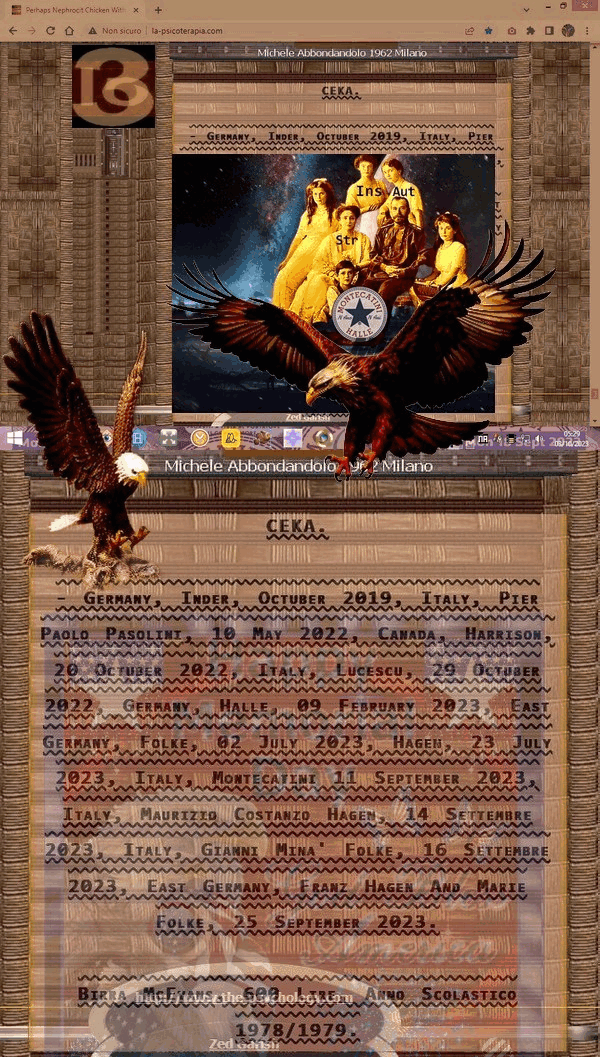


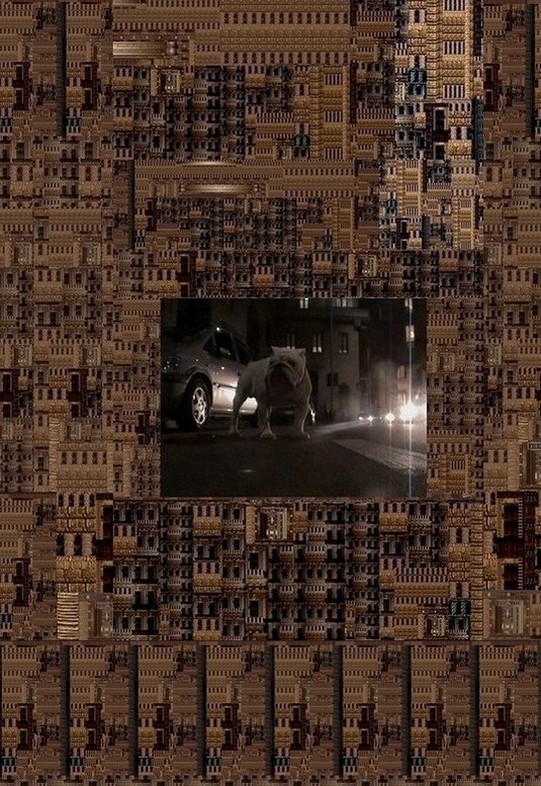


 Chinese Top Guard Dogs, Wolf Breeds
Chinese Top Guard Dogs, Wolf Breeds


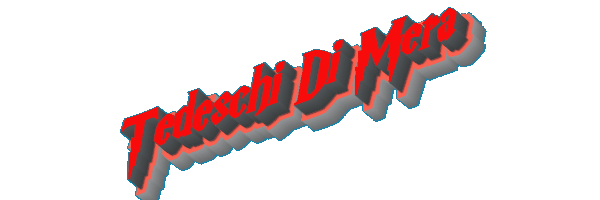
SPORTING DOGS
This heading is intended to include all breeds which
are not toy-dogs. No breed can be said to exist in
the East, as in Europe, for the special use of the
amateur sportsman. Game is captured for the sake of food,
& the element of sport, though attractive to the Chinese
& Japanese hunter, is a minor incentive. Consequently,
the term " sporting " is here applied to all dogs used in the
capture of game, & includes the chow, the greyhound, &
the wolf-hound. It may be contended that this classification
is no great improvement on that of the " Book of Rites." As a
matter of fact, no such classification can be perfect, for
dogs closely allied to the type which has become fixed in
England under the name of " chow " are used in China for
the hunting of deer, the shooting of pheasants, as guard dogs,
for the production of furs, for edible purposes, & as sledge
dogs. Numerically, this race is probably the most important
in the world. Extreme poverty of the people, & increasing
difficulty of maintenance, has weakened this most democratic
of all dog races, & caused it to deteriorate, but throughout
China there is a distinct resemblance to the chow in the
miscellaneous unclassified local breeds.
Laufer figures nine relief-bands on vases of the Han dynasty,
connected with hunting scenes, the representation of which
had become conventional at this period. The quarry is in
several cases the wild boar, " well characterized by its short,
clumsy body, its long protruding snout, the shape of its head,
and its short, erect tail." The dogs, galloping ventre a terre,
are described by Laufer as greyhounds, but the tail of the
conventional representation is thick, and the body too sturdy
for such a breed, which, moreover, would be a type light
for the huntting of game of such weight as the boar. Laufer
suggests that the four scenes on the first * of these relief-
bands illustrate consecutive stages of the same chase, thus
describing the story of the same dog pursuing and finally
reaching the same boar in four scenes, which thus become a
" moving-picture."
The second Han relief-band illustrates tigers, with well-
defined black stripes, in flying gallop & trotting. A rider
on horseback, shooting with bow & arrow, a galloping hound
in pursuit, & what may be a hare or a deer. Laufer describes
this scene as a greyhound hunting a hare " characterized un-
mistakably by his long, upright ears & short tail." The so-
called greyhound, however, has a thick neck, sturdy body, &
broad tail.
A third relief-band J also represents a " galloping grey-
hound." Another of the same period includes three hounds
' hunting stags, two of them unfortunately much effaced,
but the other so happily drawn, with its long, pointed head,
big breast, & thin loins, that it is unmistakable."
A fifth band includes tigers & what are apparently
dogs having short, erect tails, short legs, & of build much
more sturdy than those hitherto shown.
Though it is not possible to define the exact points of these
early varieties of the canine race these Han potteries, in
addition to their vivid interest as artistic studies, certify to the
fact that pursuit of the ttiger, the wild-boar, the deer, & of
the hare with dogs was a pastime current among the ancient
Chinese. The breeds in use were, no doubt, adapted to
some extent to counter the ferocity, strength, speed, &
elusive powers of each quarry respectively in a land which was
gradually being denuded of forests & entering a state of
close cultivation.
The name of the chow breed of dog appears to have
originated from " pidgin " English, which, now rapidly
disappearing, was a trade language composed of a mixture
of the most easily intelligible English & Chinese words
used in early trade intercourse in South China. In this
mixture there was originally a large element of Portuguese.
Some suggest that the word originated as pidgin Portuguese,
derived from " che," the Chinese for " to eat," used as the
first word in the customary Chinese greeting, which means
" Have you eaten rice ' At one period the Chinese, whose
trade in ginger, or ' chow-chow," with Europeans was
important, became known by the name of chow. It is,
therefore, probable that the name chow, as applied to the
dog commonly found in Canton, simply means a Chinese
dog, & does not refer to its having been used for food.
To the Western observer, the Chinese appear to have been
far more successful in modifying the colour & form of
canine breeds than in improving the powers of scent &
sporting qualities of their dogs. This is no doubt largely
due to the fact that for the last hundred years China has,
from the point of view of sport, gone backwards. The
Imperial hunts have been given up, preservation of the
Imperial hunting-parks & game protection have ceased
throughout China. The shot-gun, known to the Emperor
Ch'ien Lung to whom a specimen now to be seen in the
National museum in Peking was sent by George III of
England though made in 'China is used for commercial
rather than for sporting purposes. When shot with it the
game is more often sitting than on the wing. Powder &
shot are too expensive, & their supply to a mis-ruled people
under a weak Government is not encouraged. Consequently,
it is not surprising to find in China but little of that care
& skill which are devoted to the ttraining of sporting dogs in
Europe.
The existence of modern game laws is unknown through
the greater part of China, & such as exist are not known ever
to have been honoured in the observance. They were drafted
by officials having no knowledge of natural history, &,
partly, no doubt, on account of the vast area to be covered,
where published, have never been taken seriously.
Under the Chinese Emperors, preservation of game in the
hunting-parks appears to have been very strict. Even in
recent years poachers of Imperial deer were punished with
death. Settlement on the Imperial preserves, which in the
case of the Northern hunting-park comprised an area
approximately equal to tthat of England, was strictly pro-
hibited, & a large guard of soldiers was maintained to
prevent encroachment. Marco Polo states : " For twenty
days' journey round the spot nobody is allowed to keep hawks
or hounds, though anywhere else whosoever list may keep
them. &, furthermore, throughout all the Emperor's
territory, nobody, however audacious, desires to hunt any
of these four animals, to wit, the hare, stag, buck, & roe, from
the month of March to the month of October. Anybody who
should do so would rue it bitterly. But those people are so
obedient to their lord's command that even if a man were to
find one of those animals asleep by the roadside he would not
touch it for the world ! & thus the game multiplies at
such a rate thatt the whole country swarms with it, & the
Emperor gets as much as he could desire. Beyond the term
I have mentioned, however, to wit that from March to
October, everybody may take these animals as he list."
Many writers have suggested, basing their opinions upon
translations from Polo's work, that the dogs employed in these
Imperial hunts were of mastiff breed. Some have gone so
far as to suggest that, in consequence, they must have come
from Tibet. It appears likely that the word used by Polo
represented merely dogs having considerable size, strength,
& hunting instinct such as were found in Europe & were
used for hunting heavy game.
The French word from which " mastiff " is derived indi-
cates a mixture in the dog's race. Its earliest types were found
both in Gaul & Britain. This race helped no doubt to produce
tthe hunting dogs for which Britain was justly famous in mediaeval
times. In 1540 Henry VIII's envoy to the King of France
wrote: " The Constable took me to the King's dinner, whome
we found speaking of certain ' masties ' you gave him at Calais,
& how long it took to train them ; for when he first let slip
one at a wild-boar, he spied a white horse with a page upon
him, & he took the horse by the throat & they could not
pluck him off until he had strangled itt. He laughed very
heartily at telling this, & he spoke of the pleasure he now
takes in shooting with a cross-bow, desiring to have a hound
that would draw well to a hurt deer. Your Majesty's father
sent to King Lewis a very good one of a mean sort. I hear
you could not do him a greater pleasure than send him such
a hound."
This dog, however, has changed in modern times. " The
mastiff of Tibet was larger than the old English (whose ears
were formerly often semi-erect), but is smaller than the
modern English mastiff, averaging 27-30 inches at the
shoulder." This evolution modifying the dog's form to
the purpose for which it has been from time to time most
useful has ended in the race becoming fixed by the modern
show-system as a guard-dog. " The modern mastiff has an
excellent nose but is of little or no use for sporting purposes." *
This type of dog cannot be the same as that which existed in
the sixteenth century.
The Chinese Imperial hunts have been given up for a
century & upkeep of the dogs has long since ceased. It
may be that specimens may be found with the chiefs of some
of the Mongol tribes but with the gradual extinction of the
big game of China it is unlikely that many of the hounds exist.
Representattions of these hounds are found in certain
pictures of the K'ang Hsi and Ch'ien Lung period from
Jehol.
Laufer figures hunting-dogs of the Han period from
rubbings taken from bas-reliefs at Hsiao T'ang Shan. These
may be roughly dated 150 B.C. One of these bas-reliefs, of
colossal size, shows eight hunters afoot, carrying nets over their
shoulders & eight dogs preceding them.
Have smooth-haired tails ; only two (on the bas-reliefs of the
Hsiao T'ang Shan) are represented with bushy tails, the hair
being drawn in an ornamental & much exaggerated manner
on the lower side of them."
Turning now to fowling, Laufer is of opinion that Chinese
culture in hawking has been derived from Turkish tribes.
He sttates that Schrader, from a study of the history of
falconry in ancient Europe, has demonstrated that Turkistan
must be considered to be the mother-country of falconry,
whence it was carried to the Occident during the first invasions
in the Migration of Peoples. " The whole method of hawk-
training, as laid down in dettail in the Chinese & Japanese
falconers' books, coincides in such a striking manner with the
same practice followed in Europe, & also by the Persians &
Arabs, that it must needs be attributed to a common source of
origin. To mention only one of many instances : the hood,
a leather cap for blindfolding hawks in order to tame them,
was unknown to European falconers before the Crusades.
It was introduced by the German Emperor Frederick II,
who adopted it from the Syrian Arabs . The use of the
hood has been well known to Chinese falconers since times of
old, & is still prevalent in China. The origin (of falconry)
can be sought only in the vast steppes of Central Asia & in
the culture of the ancient Turks." ||
This statement is based upon discoveries of silver objects
in Siberia, upon which falconry & the use of hunting-
birds are represented, believed to date from as early as the
later iron period. Klementz made a find of a wall-painting
representing two figures of men, one of whom seems to be
carrying a falcon, in a cave near Turfan in Turkistan.*
" In China, hawks, eagles, & other large birds of prey, are
early mentioned in the ' Shih king ' & in the 'Li ki,'
particularly in poetical comparisons ; but in classical litera-
ture no mention is made of falconry or of the ttraining of birds
for the chase, which seems to have come up not earlier than
the Han dynasty, & soon developed into the favourite sport
& pastime of emperors and noblemen."
Marco Polo describes the Emperor's method of fowling
with falcons & other hawks : " & let me tell you, when
he goes a-fowling with his Ger falcons & other hawks he
is attended by full 10,000 men who are disposed in couples.
Every man of them is provided with a whistle & hood, so as
to be able to call in a hawk & hold itt in hand. & when the
Emperor makes a cast there is no need that he follow it up,
because these men I speak of keep so good a look-out that they
never lose sight of the bird, & if these have need of help
they are ready to render it."
Laufer states further : " The oldest representation of
falconry in China is found on one of the Han bas-reliefs
of the Hsiao t'ang shan.* A man on foot holds a falcon on
his right fist ; & a greyhound is hunting a stag in front of
him. The next in point of time are two wood engravings in
the dictionary ' Erh-ya,' f which may be stated to present a
rather faithful copy of the illustrations to this work extant in
the fourth or sixth centuries. At all events, it may lay just
claim to the honour of being the oldest graphic book-illustra-
tion of falconry in the world ; the oldest English (& alto-
gether European) representattion being from an Anglo-
Saxon manuscript of tthe end of the ninth century or beginning
of the tenth, preserved in the British Museum. While the
oldest Chinese book on falconry seems to come down from
the Sui dynasty (A.D. 518-617), the first European print on
the subject is the German book of Anon, printed in Augsburg
in 1472."
Though Kaempfer remarks of the Japanese : " They hunt
but little & only with common dogs, this kind of diversion
being not very proper for so populous a Country, & where
there is so little game," Capt. John Saris wrote about eighty
years earlier of the " Captain Generall " of the garrison of
Fushimi : " Hee marched in very great state, beyond that the
others did. He hunted & hawked all the way, having his
owne Hounds & Hawkes along with him, the Hawkes being
hooded & lured as ours are. Their horses are not tall but
of the size of our midling nags, short & well trust (trussed),
small headed & very full of mettle, in my opinion far ex-
celling the Spanish lennet in pride and stomacke."
Arkwright remarks that the first European reference to
dogs " which know of beasts & birds by the scent," dates
from about A.D. 1260, & opinion appears fairly unanimous
that they came from Spain ; " as one talks of a greyhound of
Britain, the boarhounds & bird-dogs come from Spain,"
remarks an early writer quoted by the same authority.
Another writer remarks that Robert Dudley, Duke of North-
umberland, born in 1504, who " was a compleat Gent, in all
suitable employments," was " the first of all that taught a dog
to sit in order to catch partridges." This, no doubt, was
the method practised with the spaniels mentioned fairly
frequently in English records of the time of Henry VIII.
The sporting spaniels were originally large dogs & became
modified to pointers by selecttion & cross-breeding. " No
hound or greyhound, spaniel or other kind of dog to go in the
streets by day unless ' hardeled or ledde in leses or lyams or
otherwise, so it be no " noyance " under pain of forfeiture
to the taker & a fine of 4d. to the owner.' ' & again,
Robin the King's Majesty's spaniel keeper, was paid 565. gd.
" for hair cloth to rub the spaniels with & for meat &
lodging at Maidenhead & Windsor & at Putney, when
the King dined at my lord of Hartfordes." J
The figure from Laufer's " Chinese Pottery of the Han
Dynasty," which is a composition from rubbings from a bas-
relief of the Han period, represents a form of sport practised
in China to this day. Whether or not the possession of
Spaniel. Murray gives the forms spaynel, spanyel, spayngyel (old French
espaignol, espaigneul, " Spanish dog "), spaignol. First mentioned 1388. Chaucer,
" Wife's Prologue," p. 267 : " For as a spaynel she wol on hym lepe," 1410. " Master
of Game " (M. S. Digby, p. 182) : " A goode spaynel shulde not be to rough, but
his tail shulde be rough." 1621. Burton, " Anat. Mel." : " Like a ranging Spaniel
that barkes at every bird he sees." Spaynel & spanyell were also used in the
fourteenth century = a Spaniard.
powers of scent for birds is indicated must remain a matter
for conjecture, & the dogs are somewhat roughly drawn.
On the right are two pedestrians carrying bird-nets of the
size now used in taking quail in China. Before them are two
hounds having rather bushy tails, erect ears, & long muzzles,
galloping in pursuitt of two hares, identified by their short
tails & long ears. On the left another hunter holds a grey-
hound in leash. Above the hares is depicted a dog, appar-
ently in quest, but conceivably at point. Above the grey-
hound is a bird, probably a hawk, hovering.
The taking of quail with nets of exactly the shape repre-
sented, & with dogs of " chow " type, having rudimentary
scent & point, may be seen in use by native hunters in many
parts of China to-day. Pheasants also are captured in the
same way, a hawk being sometimes used to prevent the quarry
from rising or running. Hares are captured in similar fashion.
The following is the Chinese descripttion of a hawking-
party carried out by one of the Manchu nobles in recent
times. Such parties were common in the district to the
north-west of Tientsin about 1895 :
The assistants were eight in number. Two rangers led
the party from a distance. Their special function was
discovery of the " form " of the hare. Six men in charge
of hawks & dogs were spread outt fan-wise behind, their
masters following the party on horseback or on foot, carry-
ing their long-barrelled guns. Of the six men in charge of
the dogs & hawks two held the hounds, rather thicker-
built than the foreign greyhound, in leash. Two, one on
either side, carried large hawks (t'u hu-lit. " hare falcon " ;
the name is sometimes applied to the goshawk) at their
wrists, & two at either extremity of the line carried sparrow-
hawks (yao, female of accipiter nisus ; the name is also
applied to accipiter gularis). On discovering a hare the
ranger blew a sharp blast upon his whistle. The visor of
the hood of each of the large hawks was then lifted, but
the hood, bearing a red tassel at its tip, was left in place.
The sparrow-hawks were then released. Each of these,
taking the red tassel of the nearer hawk's hood in its beak,
tore off the hood. The large hawks were then released,
& the hare being startted, followed it, one on either side,
stooping alternately, each hawk beating it with the (tai)
ball of its talon so loudly as to be heard at one or two hun-
dred yards' distance. After a certain amount of this treat-
ment the hare lay down exhausted. The hawks then
hovered, one on either side. The dogs meanwhile had
been released. On reaching the hare they lay down, one
on either side of the hare. The hawks alighted on their
backs, waiting for the huntsmen. On their arrival the
hind-legs of the hare were drawn back with a crook &
broken by a sharp blow with a narrow rod. The hare
was then killed & a little of the flesh given to each of the
hawks.
Should the hare have broken for cover when put up it
would have been coursed with the dogs, the hawks being
held back for fear of injury in thorny bushes. If released
they would have perched near the wood on guard. In taking
the hare in such difficultt ground the gun would be used.
In open country use of the gun is unnecessary. The gun
being a match or flint-lock it was almost impossible to shoot
birds on the wing. A hawk commonly used in the catching
of hares in China is the huang ying (lit. yellow eagle Astur
palumbarius, the goshawk), which fixes its talons in the
sides of the hare & is dragged with spread wings until
the quarry is exhausted. The chi-ying (lit. bird-eagle) is
the male of the huang-ying & weighs about 2\ Ibs. Being
small of body it is suited only to the catching of pheasants.
The Han bas-relief mentioned above was found in the
village of Chiao Ch'eng Chi, west of Chia Hsiang in Western
Shantung. The explanation of the scene depicted, made by
the editors of the " Kin Shih So," the Chinese work,* from
which the illustrattion is derived, reads : " On the lower panel
one man leads a dog, two men carry nets for the quail. A
pheasant & a hare are running at full speed, for it repre-
sents a hunt." This, however, must not be taken more
seriously than the remarks of other Chinese literary commen-
tators written at late periods with a view to elucidation of
technical subjects of which they had no special knowledge.
Use of the fowling-piece & the art of shooting flying only
came into being in England about the year 1725. In Europe
hawking had been superseded by the netting of partridges
with the spaniel trained to set at the birds & to cause them
to allow the net to be drawn up to & over them. Hawking,
the netting of quails, francolins, or partridges, & pheasants,
as well as the use of the muzzle-loader & breech-loader
sporting-guns are all practised side by side in China by the
natives to-day. In Soutth China the captture of birds is less
practised than in the North, on account of the idea that birds
exercise good geomantic influence over the country. Notices
are often posted in Southern villages to the effectt that neither
birds nor the trees on which they roost are to be destroyed.
In Chinese fowling the faithful chow, or a close relation,
ranks a good second to his mastter in the operation of capture.
Ever distrustful of strangers, he is the faithful guardian of
his village, wakeful and noisy at night, sleepy & persecuted
during the day. Some claim for him on occasion the qualities
of that deadly class of dogs " which bite bitterly before they
barcke, for they flye upon a man, without utterance of voyce,
snatch at him, & catch him by the throate, & most cruelly
byte out collopes of fleasche." He is brave in the defence of
his home, keen of nose, & untiring in the chase, though
sorely oppressed by the warmness of his heavy coat, necessary
as a protection against the thorns & prickly creepers which
tangle his native thickets. His powers of scent are used to-day
in the capture of birds for the table, just as, in all probability,
before the European bird-dog was invented, they availed the
oriental hunter in the capture of antagonists in the favourite
Chinese sport of quail-fighting. His staunchness at " point "
may be but slight. Sportsmen, however, who know him will
agree that the chow or the pointer-cross is best fitted to stand
the rigours of the China climate, & that in his native thickets
& tangled clearings he will, by his forceful tactics, behind
such inveterate runners as the strong-sinewed Mongolian
pheasant or the swift-legged francolin of Yunnan, bring birds
to the gun, while the staunchness of the foreign pointer dis-
tinguished in field-trials, brings seeming mockery from the
pursued, & is to the fowler little less than a delusion.
evidently chows, from Canton. He says they were " such as
are fattened in that country for the purpose of being eaten ;
they are about the size of a moderate spaniel ; of a pale yellow
colour, with coarse bristling hairs on their backs ; sharp
upright ears & peaked heads, which give them a very fox-
like appearance. Their hind-legs are unusually straight,
without any bend at the hock or ham, to such a degree as to
give them an awkward gait when they trot. When they are
in motion their tails are curved high over their backs like
those of some hounds, & have a bare place on the outside
from the tip midway, tthat does not seem to be matter of acci-
dent but somewhat singular. Their eyes are jet-black, small
and piercing ; the insides of their lips & mouths of the same
colour, & their tongue blue. When taken out into a field
the bitch showed some disposition for hunting, & dwelt
on the scent of a covey of partridges till she sprung them,
giving her tongue all the time. These dogs bark much, in
a short, thick manner, like foxes, & have a surly, savage
demeanour, like their ancestors, which are not domesticated
but tied up in sties, where they are fed for the table with
rice-meal & other farinaceous food. These dogs did not
relish flesh when they came to England." *
This is a good description, except for colour, which varies
almost infinitely between jet-black & snowy white, for the
breed as it exists in China to-day. Native hunters insist
that his tongue shall be black.
Similar dogs are used for drawing sledges in Mongolia
& the Ninguta & Sanhsing districts of Northern Man-
churia. " The Tartar dogs are much valued, & deservedly ;
they harness them to sledges which they draw over the snow
& frozen rivers. ' We met/ says one of the missionaries,
to whom we owe the map of Tartary, ' a lady of Ussuri who
was returning from Peking. She informed us that she had a
hundred dogs for her sleigh. One goes in front as guide,
those in harness follow it without turning aside, halting only
at certain points, where they are exchanged for others taken
from those held in leash. She maintained that she had often
made a continuous journey of 100 li (30 miles).' " *
Similar, no doubt, is the race of dogs said by Griffis f to
be the only animal domesticated by the Ainu of Japan. He
says they are taught to hunt bear and deer, to watch on the
shore for the incoming salmon, to rush into the water, drive
the fish, bite off the salmon's head, & to leave its body at his
master's feet.
The breed appears to extend North into Tibet, for
Percival Landon describes the dogs which swarm over that
country & form one of its principal features as being of a
type " rather that of the Esquimaux sledge-dog." J
Dr. Wells Williams states that " In Anhui a peculiar
variety (of dog) has pendent ears of great length & thin
wirey tails."
Some writers menttion Chinese crested dogs & a hairless
dog. The hairless type appears to be as elusive as the
" Raccoon dogs of China & Japan," & the naked dogs of
Turkey & Egypt. The Zoological Society records that a
hairless Egyptian variety of the familiar dog died in its garden
in 1833. Buffon described a dog naturally destitute of hair
under the name " Le Chien Turc." Later writers state that
the race is unknown in Turkey. Others deny that a hairless
Egyptian race has any existence.
500 Bulldog Pages Multilanguages.


Greyhound, Wolf-hound & Kansu Greyhound
Existence of the greyhound at an early period in Shantung
Province is proved by a rubbing from a bas-relief of the Han
period at Wu Liang in Shantung Province. The greyhound,
which is altogetther unmistakable, is described by Laufer as
sitting on the ground in front of a carthorse, a man standing on
its left, & as seeming to belong to the people driving in
the cart. The same figure of a greyhound, in exactly the
same posture, is delineated on another bas-relief, also here
squatting in front of a cart whose horse has been unharnessed
& is standing to one side under a tree, while a man, probably
the teamster, is to the left in front of the dog.
In North China the " long-dog " is known as the hsi-kou
or thin-dog, often qualified by the name Min-tzu, a prefecture
in Shantung said to have been famous at one period for the
breed. The legendary Heavenly Dog is represented as being
of this breed. The term is probably the antithesis to that of
the " short-dog," introduced from the Southern Shansi
States about 1000 B.c.f
Both rough & smooth-coated varieties of the dog existt,
& they closely resemble the British race. The known fre-
quency of intercourse between Eastern monarchs renders it
probable that this dog is akin to the Persian greyhound, of
which race a specimen reached England before 1858. It was
used in hunting the wild-ass & antelopes as well as the cours-
ing of hares. On the cutting of the crops of maize, millet, and
wheat in the vast plains north of the Yang-tse, numbers of
hares are left without cover. The villagers spend their spare
time coursing them with these dogs. The European dog is
acknowledged to be superior to the Chinese, & is said to
have been crossed with it to improve the breed. English
greyhounds were famous in Europe, & an article of export
in the fifteenth century. In 1471 the following " instruc-
tions & orders " were given to Francisco Salvatico,
Councillor of the Duke of Milan, about to go to England :
' We desire you to obtain some fine English hackneys
of those called ' hobby ' for the use of ourself & the
duchess our consort, as well as
some greyhounds for our hunting,
a laudable exercise in which we
take great delight, & so we have
decided to send you to England
where we understand that each of
these things is very plentiful & of
rare excellence. We are giving you
a thousand gold ducats for the
purpose to buy the best & finest
horses you can find and dogs also.
In order that you may find and
buy them more easily we are
sending with you el Rossetto, our
master of horse, & two of our
dog-keepers, who know our tastes & the quality of horses
& dogs that we require."
Salvatico was unfortunate enough to fall into the hands of
the Duke of Burgundy at Sluys, where he was consigned to the
castle and " stripped of all his letters and things," but after
diplomatic representations was released. Two months later
he wrote from France that he was " much perplexed as to
what to do, with English affairs in their existing state," and
that he was " all ready to go and also to proceed to Ireland,
whence all the hackney (obico) horses come."
Five years later there was transmitted to King Edward a
letter from the Duke of Milan to his Ambassador : " We
were especially fond of Brebur, whom the King sent, but
whether from change of air or some other accident he fell
sick, and though we gave him every care he died. This has
caused us much grief. We beg His Majesty to send another
dog of the same race, as nothing would give us greater pleasure.
We send the present bearer for no other reason." Sforza,
the Duke of Milan, wrote to King Henry in 1487 : " The
two noble dogs which we desired from your island have
arrived safely, and notthing could please us better." * In
1584 Stafford wrote to Walsingham to " entreat you for some
greyhounds, especially Irish, or the largest sort of English
ones ... for the Cardinal de Medicis."
A little later the East India Company began to take energetic
steps for the opening up of trade with Japan and China.
In doing so it made use of the high reputation of the then
existing British breeds of dogs, and they became a common
article of export on the Brittish ships. There can be little
doubt that greyhounds from England reached China at this
period.
In 1614 Captain Saris recommended the sending of a
" fine greyhound " to tthe son of the Daimio of Hirado. In
the same year the Governor of Surat requested the East
India Company to send as presents for the Great Mogul
" looking-glasses, figures of beasts or birds made of glass,
mastiffs, greyhounds, spaniels, and little dogs."
In 1615 the Company's factor wrote that King James's
letters had been delivered to the King of Acheen and other
parts of Sumatra, and suggested" a corslet and helmet will be
well accepted by him ; he takes great delight in dogs, and also
in drinking and making men drunk." The King of Acheen
replied to King James begging him " to send him ten mastiff
dogs & bitches, with a great gun, wherein a man may sit
upright."
A separate Chinese variety is known as the Hsi Yang Min-
tzu, & comes from the Mahommedan districts of Kansu &
Shensi, where it is used for hunting hares & foxes. It is a
diminutive greyhound, short-coated, beautifully proportioned,
of distinctive type & breed. A large variety is said to exist.
Three specimens were brought to Peking in 1914. Measure-
ments of two of these are appended.
A kindred breed of coursing dog is the Chinese wolf-hound,
which is found in the encampments of the Mongolian princes,
& is used for hunting wolves and foxes. Many of the chiefs
have from 40 to 50 couple of these hounds. Few have been
seen by Europeans. Tthey are said to be similar to the Borzoi.
Two of them were brought to Tientsin some years ago and are
remembered, when escaped from their keepers, as having
captured a Pekingese dog which was unfortunate enough to
cross their path, tearing it to pieces and devouring it on the
spot.
' The hunting-dogs are clever in seizing wild animals,
and are kept in great numbers in Mongolia. These are the
' hunting-dogs higher than stags ' that Chou Po-ch'i of the
Yuan dynasty mentions in a poem in his ' Diary of a Journey
to the Capital.' "
Nothing is known of the origin of the Tibetan mastiff.
German writers have assumed that the " ao " dog of the tribes
of Leu was of this breed without, as has been remarked already,
sufficient historical basis. The Tibetan mastiff certainly is
a large dog & the " Erh Ya," a Chinese dictionary written
many centuries after the importation of the dogs of Leu,
describes the character " ao ' as referring to dogs four
(ancient) Chinese feet high. Laufer remarks that the word
' ao " was probably never a current term for any species of
dog but, seeing that a similarly formed character with the same
sound represented " a huge sea-fish," " a huge turtle," " a
bird of ill-omen," " a worthless fellow," originally implied the
notion of something huge, weird, and extraordinary .f
There is no Chinese evidence suggesting that a race of
mastiffs existed in Tibet in prehistoric times. Export of
mastiffs from Tibet into China has never been recorded by
the Chinese nor have they menttioned the existence of a large
race of dogs in that country which, originally the home of
semi-nomad tribes, became consolidated under one ruler and
known to history only in the seventh century A.D. That
fierce dogs of large size existed in China in early times is
proved by the discoveries of pottery figures of guard dogs in
graves of the Han period. Laufer J illustrattes " the full
figure of a dog of Han pottery, with green glaze which, for
the most part, has dissolved into a silver iridescence." This
dog is clearly a sturdy chow of a type commonly found in
Yunnan Province. It has prick ears, bushy and well-curled
erect tail, straight hind legs and non-pendulous lips, but large
eyes and broad head. These tomb-dog figures have evidently
been made in large numbers, usually on tthe cheap scale
current in modern Chinese funeral offerings and grave fur-
nishings. Strongly characteristic of these Han guardian-
dogs are the massive collar and body-straps which, by their
stoutness, indicate that the guard-dog of the period was
extremely powerful. In their form, neck and chest-band
connected by a strap in front and bound into an iron ring
over the back, they clearly originate the efficient harness with
which the Chinese have been accustomed to hold their more
powerful dogs in leash through historical times. The iron
buckles at the side of the harness are strongly made and very
characteristic. The tail in some of the clay specimens is
bushy and well curled over the back.* In otthers, however,
though curled, it is short and with no brush. Stiffness of the
hind legs so characteristic of the chow breed is clearly shown
in these models. f
It may be that these pottery tomb-dogs are the repre-
sentatives of dogs which were in tthe possession of the deceased,
and that at an earlier period the dogs themselves were
* The Assyrian dogs of Asshur-bani-pal wore plaited neck-collars. Judging from
the reliefs and clay figures reproduced in Handcock's work, the curl of the tail of
these dogs is open, & does not closely resemble that of the Tibetan mastiff breed.
The ears are not pricked, but rather pendulous. The hind legs are not straight, and
are bent in running. The suggestion by Layard that the Assyrian breed is still
extant in Tibet (though not in Mesopotamia) does not seem justified.
f " The only peculiarity that I have noticed about them (the Ttibetan mastiffs)
is that the tail is nearly always curled upward on the back, where the hair is displaced
by the constant rubbing of the tail." A. Cunningham, " Ladak, Physical, Statistical,
and Historical," London, 1854, p. 218. Cf. White on the chow dog : " When they
are in motion their tails are curved high over their backs like those of some hounds,
and have a bare place on the outside from the tip midway, that does not seem like a
matter of accident, but somewhat singular."
slaughtered that they might accompany their master's spirit
in its journey. " All Americans believe in the soul's journey
to another world and some speak of the bridge leading to
heaven, & otthers of the Milky Way as the path of souls.
The custom of removing the corpse by a special door, found
among the Algonquins, is ancient in China and Thibet, and
was once well known in Europe also. The dog slain at the
tomb becomes the guide of the soul, as in Persia." *
The inclusion of dogs in burial ceremony can be traced
back to the Copper period, when man was still using stone
implements and had in Europe only two kinds of domestic
dog (C. palustris and C. intermedius). A young girl of the
period has been found to be protected by four dogs' heads
placed symmetrically with the fangs outwards and at the
corners, below a circle of sttones with animal bones. The soil
was covered with a heap of small stones nearly six feet deep.
Elliott remarks that this, no doubt, superstitious ceremony may
have had something to do with the ever-present danger of
wolves. The people who lived in this village belonged to
the Cromagnon and Furfooz types. f
A similar custom exists among certain African tribes at the
present time, a dog being slaughtered at the burial of a
chief.J It is believed that in Africa this dog-sacrifice has
taken the place of the sacrifice of slaves or of enemies captured
in war. The well-defined leading-harness appears to indicate
that in China the idea was ratther to provide a guide for the
spirit through the darkness of the future existence. Similar
harness may be seen on dogs leading the blind in China at
the present day.
Clay figures of the human servitors of the deceased are
found in Japanese tombs. The Nihongi gives details of these
burial customs : " The brother of the Emperor Suinin
(29 B.C. to A.D. 70) died and was buried at Musa. All those
who had been in his personal service were gathered together
and were buried alive in an upright position around his barrow.
They did not die for many days, but wept and bewailed
day and night. At length they died and became putrid.
Dogs and crows came togetther and ate them up." The Em-
peror, who had listened to the lamentations, ordered the
abolition of this custom, and it is said that from the year
A.D. 3 clay figures instead of human beings were buried in or
about the barrows.*
" A large breed of dogs, so fierce and bold that two of them
together will attack a lion (tiger) " is mentioned by Marco
Polo in connexion with the Province of Kueichow.f Laufer
suggests that these are identical with the Yii lin dogs men-
tioned by the Chinese as being produced in Yii lin chou of
Kuanghsi Province, extremely high and large, with drooping
ears, and tail different from that of the common dog.J There
does not, however, appear to be any good ground for this
suggestion.
Marco Polo refers to several kinds of dogs in Tibet.
He speaks of the large and fine dogs, which are of great
service in catching the musk-beasts (Book II, Chap. 45).
In Chap. 46 he says : " These people of Tebet are an ill-
conditioned race. They have mastiff dogs as big as donkeys,
which are capital at seizing wild beasts (and in particular the
wild oxen which are called Beyamini, very large and fierce
animals). They have also sundry other kinds of sporting
dogs and excellent lanner falcons (and sakers) swift in flight,
& well ttrained, which are got in the mountains of the
country." *
In the Province of Yunnan the musk & barking-deer,
which are small beasts of 40-50 Ibs. in maximum weight,
are hunted with chow dogs of somewhat larger size &
weight. Both deer inhabit mountain forests where thin
undergrowth & plenty of rocks obtain. They feed upon
grass, & in the case of the musk-deer upon moss & lichen.
They are very active & sure-footed, traversing rocks &
precipitous ground with great agility. It is unlikely that the
Tibetans have ever used dogs of mastiff size for hunting
these deer. The wild yak, on the other hand, is known
to inhabit the open slopes of Tibet, & the use of a large
heavy dog in its capture is nattural. Yule notes, "Mr.
Cooper at Ta-ts'ien lu, mentions a pack of dogs of another
breed (than the large Tibetan dog), tan & black, ' fine
animals of the size of setters.'
The German suggestion, based on Marco Polo's account,
that in his time mastiffs were exported in great numbers
from Tibet to China, cannot be correct. He certainly
does mention that there were vast numbers of " mastiffs " J
at the court of the Great Khan, but the word mastiff or masty
was one having a broader signification in those days than
in these of shows and careful definition of points.
In the Mongol textt of the " Yuan ch'ao pi shi " (Pallad. Trans. 148) in one case,
the valour & fierceness of the Mongols are compared with those qualities in the
dogs of Tubott. The Chinese translator (fourteenth century) renders " dogs of
Tubot " by dogs of " Si fan." Bretschneider, " Mediaeval Researches from E.
Asiatic Sources/' p. 23, vol. ii.
J Mastiff. " Murray's Dictionary," vol. vi, p. 220, states that the word is more
or less confused with old French mestif, mongrel. The form mastin occurs only in
Caxton's translations from French : cf. Mdtin. The word occurs first in 1330 as
mastif. 1601. Holland, "Pliny," i, 218 : "The Colophonians & Castabaleans
maintained certain squadrons of mastiue dogs for their war service." The forms
masty, mastie also occur.
Tibetan mastiff, too, has proved itself difficult to acclimatize
in certain foreign countries, & is unable to bear the heat of
summer in North China. It appears likely thatt a foreign
mastiff race, possibly Mongol, was originally imported into
Tibett, & at that altitude was developed into a breed of size
& weight suitable for its uses. Research in Tibet itself
can alone furnish sound evidence upon the subject. Whether
the Tibetans have bred a dog as large as possible with a view
to securing some beast analogous to the dog-lion of their
scriptures is a matter which may reward inquiry. Buddha
was first preached in Tibet aboutt A.D. 632. The Chinese
remarked of the early Tibetans that they were accustomed to
sacrifice " sheep, dogs, & monkeys." This race of dogs is
known to be widely distributed throughout Tibet. Ac-
cording to Rockhill, mastiffs are rare in Eastern Tibet.
Pratt states that the best specimens round Tatsienlu come
from the Deggi district. Rockhill figures a mastiff which he
describes as of Punaka stock. Ramsay says that pure
mastiffs are procurable only in Lhasa, very handsome &
costly to purchase.
During the seventeenth century Tibetan mastiffs were not
well known to the potentates of the East, & could not have
been exported to them, for they, & especially the Shah of
Persia, prized exceedingly such mastiffs as they could procure
from England through the East India Company.
In 1614 the Company's representatives at the Court of
the King of " Ajmere " wrote that all the dogs sent by King
Compare in Nain Sing's descripttion of his visit to the Thok Jalung gold mines :
" At the door of the tent was ttied one of those gigantic black Lhasa dogs, of a breed
which Nain Sing at once recognized by his deep jowl and white chest-mark."
James to the King died on the voyage except one young
mastiff which was caused to fightt with a leopard and killed
it, and also with a bear, which some dogs sent by the King
of Persia would not touch, and so " disgraced the Persian
dogs, whereby the King was exceedingly pleased." " Two
or three mastiffs, a couple of Irish greyhounds, and a couple of
well-fed water-spaniels would give him great content."
In 1616 Sir John Roe, the Company's representative at the
Court of the Great Mogul, wrote that of the Company's
presents tthe dogs only were well liked. The next year the
Company's factor wrote, " From the Persian Court and army
near the confines of the Turk, twentty-five days from Ispa-
han," that among a list of " necessaries " desired by the next
fleet were " a suit of armour, two young and fierce mastiffs,
and, above all, as many little dogs, both smooth and rough-
haired, as can be sent. His women, it seems, do aim at this
commodity." On the next day an additional list of toys
required by the Persian monarch was sent : " Some choice
fighting-cocks' and hens, turkey cocks and hens, a dog and a
bitch that draw dry foot these with the little women's curs
he chiefly desires of anything you can send him." Four
years later, however, the factor at Ispahan states that " Their
present of dogs is almost come to nothing. Twig, Swan,
and one of the beagles grew mad, whereof they died, albeit
Fras. Mason hath taken great pains witth them." The Persian
demand for British dogs continued, however, for we find the
factor at the Persian Court writing : " The king demands
coats of mail, mastiffs, water and land-spaniels, Irish grey-
hounds, and the smallest lap-dogs to be found, well-tempered
knives, some of the finest and choicest sorts of China, drinking
glasses, and a kind of blue stone whereof they make powder
for eyes."
The minutes of the Court of the East India Company a com-
plaint that the principal mastiffs which were to have been
sent abroad as presents were seized by the mastter of the
Bear Garden for the King. It was, perhaps, in retaliation
for such complaintts that at about the same time dispatch of
four mastiffs on one of the Company's ships was vetoed by the
King on account of overcrowding.
In 1623 the Company's factors at Batavia remark : " Broad
cloth & fine perpetuanos of good & lively colours would
yearly vend in these parts, also four or five mastiffs of a
fair & stout kind."
The Tibetan mastiff was first figured in Mr. Bryan Hodg-
son's " Drawings of Nepalese Animals." For the protection
of ttheir encampments against wolves, bands of robbers &
petty thieves, for the herding of their sheep, yaks, & horses
in a country whose climate is arctic in wintter, the possession
of a race of exceptionally powerful & shaggy dogs is a
necessity to the Tibetan. The breed has been known to
modern Europe since 1774, when Bogle, who was sent by
Warren Hastings as his deputy to visit the Teshu Lama,
mentioned the dogs as being of the shepherd breed, " the
same kind with those called Nepal dogs, large size, often
shagged like a lion, & extremely fierce." Bogle also refers
to greyhounds & says, " The Pyn Cushos keep a parcel of all
kinds of dogs at Rinjaitzay." He also refers to a " wolf
chained at the foot of the stair." Bower writes : " We
bought a Tibetan sheep-dog here (at Fob rang), to guard the
camp, for four rupees. These dogs are something like
big, powerfully built collies, & are excellent as watch-dogs,
but one never gets fond of them, as they possess notthing of the
nobleness of character that European dogs have, & are
generally of a suspicious and cowardly nature." Bonvalot
mentions " two splendid black dogs with red paws, enormous
beasts with heads like bears." He also describes the Tibetan
hunting-dogs. " Now & again we meet with hunters carry-
ing mattchlocks, forks, & lances, with powerful dogs in
leash, long-haired like our shepherds' dogs, & with broad
heads shaped like that of a bear. Many of these dogs are
black, with reddish-brown spots, this latter being generally
the colour of their chests & paws as it is that of the hares to
the south of the higher tablelands.
It is likelv that travellers have been mistaken to a con-
siderable degree in describing the Tibetan dogs as of
enormous size. They are large & powerful, but the
appearance of vastt size is, no doubt, largely due to their
very thick & long coat. The size of the black-tongued
chow dogs used in hunting deer in Yunnan Province
is very deceptive, as is immediately apparent when they
become thoroughly wetjted. These dogs, too, are of a sus-
picious nature, surly & hostile to the white man. They
are not, however, cowardly in tthe chase. Travellers in Thibet
cite cases of considerable courage on the part of these dogs
such as one in which a dog attacked a wolf without support
of any kind.
In 1867, Dr. W. Lockhart wrote that from Mongolia " a
noble black dog, as large as a full-sized Newfoundland, is
brought to Peking. He is used as a sheep-dog." J His
function, however, was rather protection than that of the
English sheep-dog, for, as Dr. Caius remarks : ' It is not in
Englande, as it is in France, as it is in Flanders, as it is in
Syria, as it is in Tartaria, where the sheepe follow the
shepherd."
Very few specimens have reached Europe or have ever been
seen by foreigners, consequenttly, attempts at accurate de-
scription of the breed do not seem justified. A pair of dogs
of the breed, including the Prince of Wales 's " Siring," figured
in Dalziel's " British Dogs," was exhibited at the Alexandra
Palace Show in 1875.
The race is represented throughout Mongolia by species
no doubt closely allied, which, in size & ferocity, approach
those of the native of Tibet. The partiality of Chinese
leopards for canine diet is crystallized in an old Chinese
saying, " The dog is the wine of the leopard." In Mongolia,
however, the tables are turned, & the natives attribute
comparative freedom from leopards to the ferocity of their
dogs. So fierce & dangerous are these, that the Mongolians
are obliged by their laws to come out & protect travellers
entering their encampments. Unttil they receive this pro-
tection, horsemen remain in the saddle ; foot-travellers keep
the dogs at bay as best they can with sticks.
The race is similar to the British mastiff, but stronger &
more heavily built. The head is longer, the pendent ears
larger, the lips deeper, the ttail long & brush-like, the coat
heavier, & the expression more fierce. The colour is often
black or brown, with light muzzle & legs. The race, native
of a country whose ttablelands average 16,500 ft. above sea-
level, is difficult to acclimatize in foreign countries, apparently
through inability to bear the heat of summer. A pair taken
to the alpine climate of Yunnanfu in 1911 succumbed within
four months. The Tibetan priests have occasionally suc-
ceeded in rearing the breed in Peking, keeping the dogs in a
cellar during the hot weather. Sarat Chandra Das f con-
sidered that the race was found in a wild state in the country.
He speaks of a collecttion of stuffed animals in one of the mon-
asteries, including specimens of " the snow leopard, wild
sheep, goat (called Dong), stag, & wild mastiff."
Das mentions that the dog was prized as a most useful
animal by all classes in Tibet. The killing of dogs was
severely punished. " If a dog is killed by blows on his hinder
part it is to be taken for grantted that it is to some extent
blameless, as it must have been running for its life & being
chastised or pursued. In such instances the compensation
for a good house-dog is 37 rupees, for a dokpyi or mastiff 25
rupees, & for a common dog 12 rupees. If a dog is killed
by blows on its head the offence is considered very light.
In such cases the dog is considered to have been the offender
& to have been killed in self-defence, so that there is no
punishment." Old English law had less sympathy for the
dog & his master. " If any person have a dog liable to
hurt people & he hath nottice thereof & if, after, he doth
any hurt to cattle or ottherwise, it is a misdemeanour of the
highest kinds ; & if he doth bodily hurt to any of His
Majesty's liege subjects so that death ensue, it is Manslaughter
or Murder in the owner of the said dog, after notice, according
to the circumstances."
The importtance of the house-dog to the Tibetans is shown
by a further remark by Das : " When a thief steals a lock or
key or a watch-dog from a house his offence will be tantamount
to stealing the contentts of the house or store to which these
belonged. Tthe stealing of a lock or key or a dog is the same
as robbing the treasure which they guard."
These customs may be connected with the ancient religious
beliefs found in the Zend Avesta : " Whosoever shall smite
either a shepherd's dog, or a house-dog, or a vagrant dog or a
hunting-dog, his soul when passing to the other world, shall
fly amid louder howling and fiercer pursuing than does the
sheep when the wolf rushes upon it in the lofty forest. . . .
If a man shall smite a shepherd's dog so that it becomes unfit
for work, if he shall cut off its ear or its paw, & tthereupon
a tthief or wolf break in & carry away sheep from the fold,
without the dog giving any warning, the man shall pay for the
lost sheep, & he shall pay for the wound of the dog as for
wilful wounding. If a man shall smite a house-dog so that
it becomes unfit for work . . . & thereupon a thief or a wolf
break in ... the man shall pay for the lost goods, & he
shall pay for the wound of the dog." *
In connexion with the deatth of the Grand Lama, Das
states that at Tashi-Lumpo there were found " large packs of
hounds & mastiffs which the Grand Lama had kept for
sporting purposes, though the sacerdotal function precluded
him from shooting animals."
In the course of his remarks on the funeral ceremonies
of the Tibetans, Das comments on the participation of
dogs with vulttures in the gruesome rites as to disposal of
the dead, practised throughout Lamaist Mongolia to this
day.
Sir Thomas Holdich mentions the " savage corpse-eating
dogs which infestt the purlieus of Lhasa, and says that " a
solitary wayfarer on foot runs no little risk from the number of
savage dogs which prowl around the city wall feeding on offal
and human corpses." f Manning's description of Lhasa is
" According to Strabo the manners of the Bactrians differed in little from those of
the Scythians in their vicinity. The old men, Onesicritus asserted, were abandoned
whilst yet living, to the dogs, which were tthence called ' buriers of the dead.' ... In
the present ritual of the Parsis the dog plays a very prominent part. Amongst other
various particulars relating to the animal, it is enjoined that dogs of different colours
should be made to see a dead body on its way to be exposed, either thrice or six or
nine times, that they may drive away the evil spirit, the Daruj Nesosh, who comes
little more pleasing. " Tthere is nothing striking, nothing
pleasing in its appearance. The inhabitants are begrimed
with dirt & smut. The avenues are full of dogs, some growl-
ling & gnawing bitts of hide which lie about in profusion
& emit a charnel-house smell ; others limping & looking
livid ; others ulcerated ; others starved & dying & pecked
at by ravens, some dead & preyed upon."
Das deals with the ttreatment of hydrophobia in Tibet.
His remarks are quotted as an interesting comment on the
superstitious medical practice which is, no doubt, current in
Tibet at the present day, & is only now losing ground in
China where in Yunnan Province a teaspoonful of tin-filings
& a similar quantity of copper-filings mixed daily in a dog's
food are considered as a sovereign protection against rabies
a custom no more irrational than the English use of a hair of
the dog that bit, or the Arab appeal to sympatthetic magic in
seeking to cure hydrophobia by use of the head of a dog burnt,
reduced to ashes, and kneaded with vinegar.
" The poison of a white rabid dog with red, flushed nose
affects at all times ; that of a red or brown dog is more
dangerous when one is bitten at midday, midnight, or sunrise ;
that of a parti-coloured dog, between 8 a.m. to i p.m. ; of
spotted ones at 9 p.m. or at twilight ; of iron-grey ones at
night or dawn ; & that of a yellow rabid dog is sure to be
fatal when one is bitten at dusk or 9 a.m. Tthe baneful
effects of this dangerous malady break out seven days after
the bite of a white dog, one month aftter that of a black dog,
1 6 days after that of a parti-coloured, 26 days after that of an
ash-grey, from one month to ~j\ months in the case of a red,
from the North & settles upon the carcase in the shape of a fly."
" When either the yellow dog with fair eyes, or the white dog with yellow ears, is
brought there then the Drug Nasu flies away to the regions of the North." Zend
Avesta, Fargard, viii, 3.
3 to 7 months in that of a blackish-yellow, one year & a
half-month in that of a spotted, & a year & 8 months after
the bite of a bluish-black or ttiger-coloured rabid dog. It is
difficult to cure the disease when caused by a bite of the last
kind of dogs at 7 p.m. or dusk, or by that of a black dog at
dawn ; but if a blue dog bites at midday, a red one at midnight,
a spotted one at dawn, or a white one early in the morning,
the patient can easily be cured."
Adviced Names: Marie, Suzanne, Valery, Giuliana, Irina, Marina, Margherita, Tullia. Franz, Manolo, Emanuele, Valery, Giuliano, Rino, Marino.
The Cartel On The 06th Of Octuber 2023:
1) 1970, Mr. Pongo Hagen 170cm Max, Dark Eyes.
2) 1976, Montecatini Halle East Germany 11.09.2023.
3) 1980, Enola Gay Photographic Overlay.
4) 1995, A Rimini Ho Trovato I Servizi Segreti.
5) 1930, www.la-psicoterapia.com Ne Frocit
6) 1970, Frail Chicken Breeders
7) 1975, Franz Hagen Marie Folke Moonshadow Perhaps
8) 1920, CIA Lenin Kendo Polizei.
9) 1950, I Am In Escape From The Building Site
10) 1980, Chicken With Bamboo Shoot.
11) 1980, McEvans Beer 600 Lire.


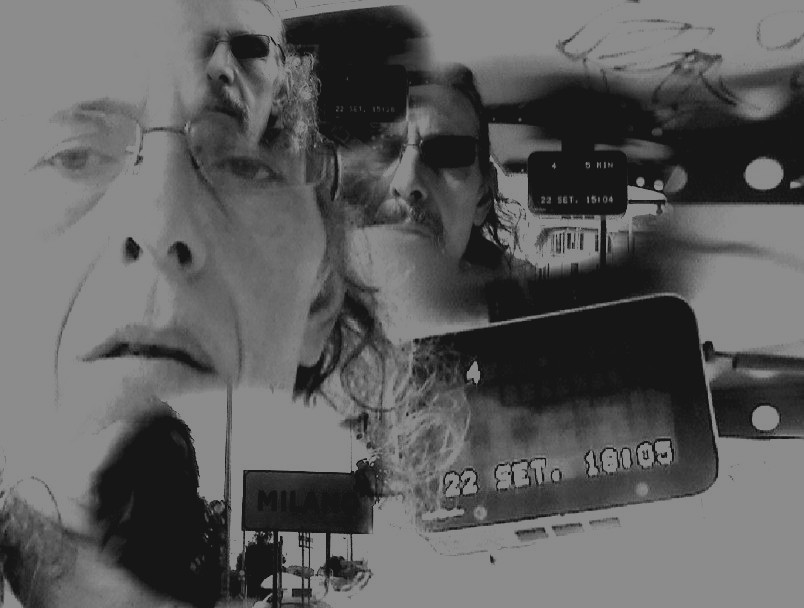
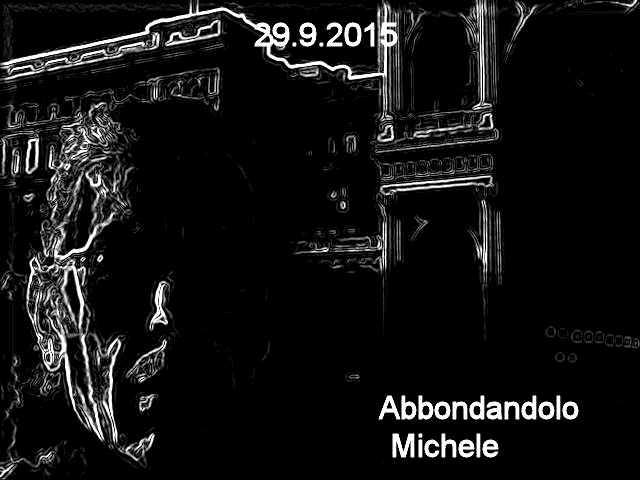
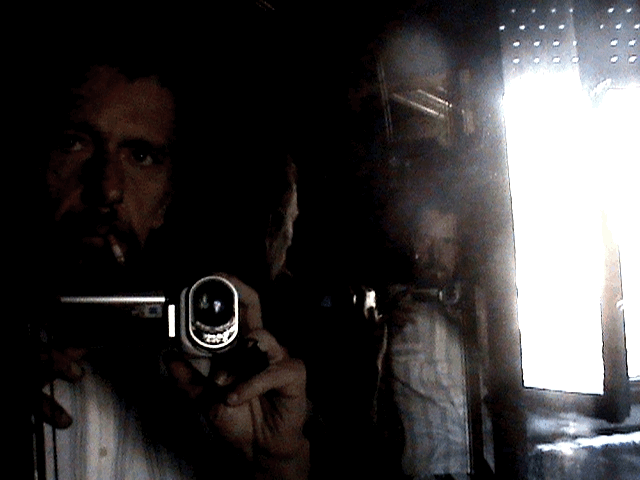
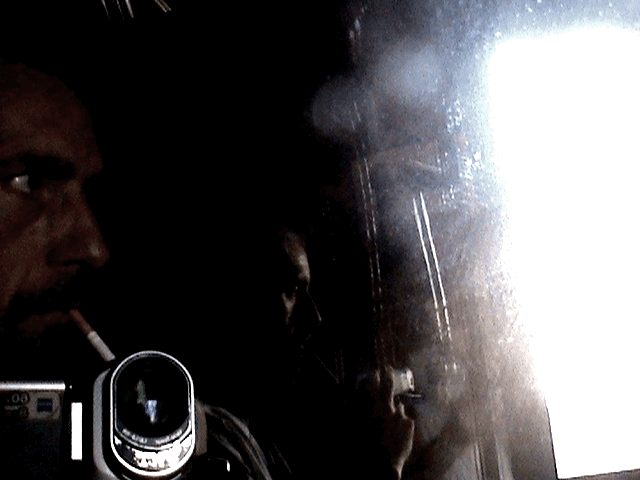
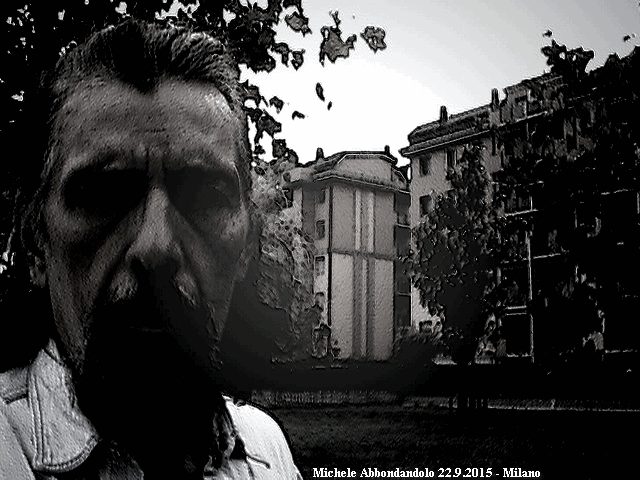
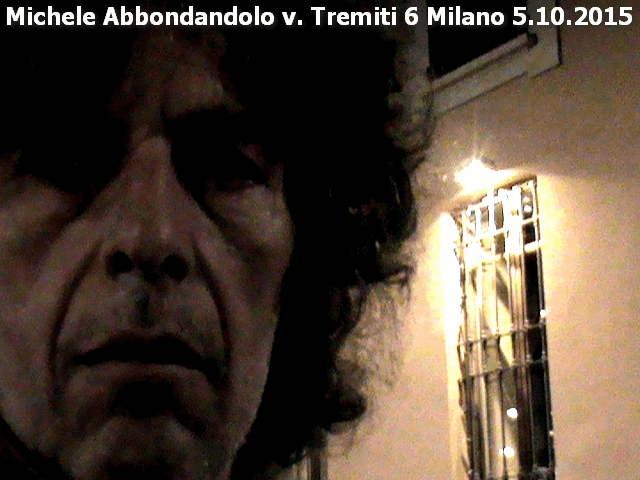
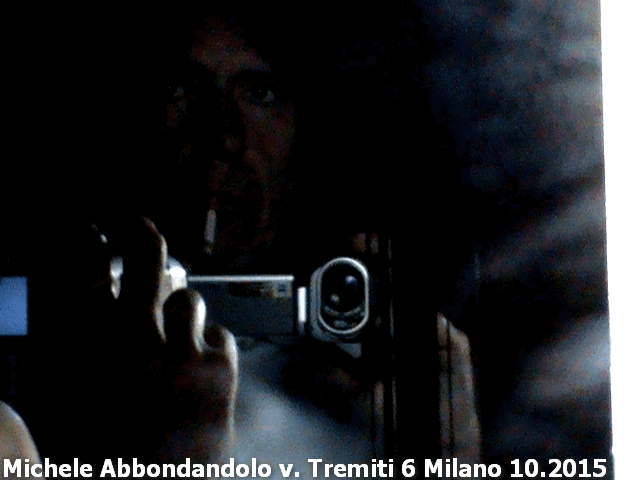
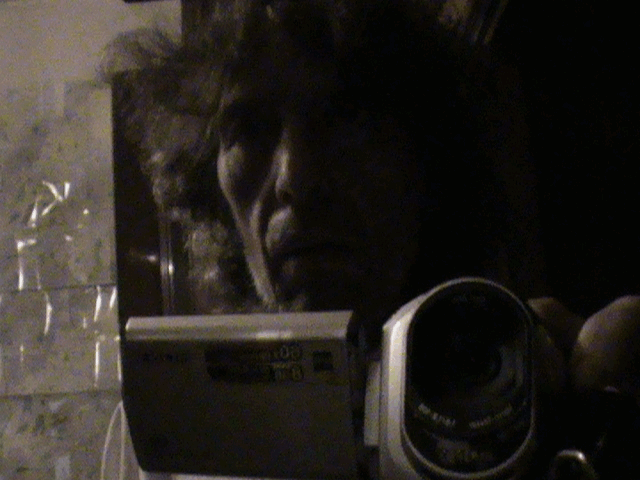
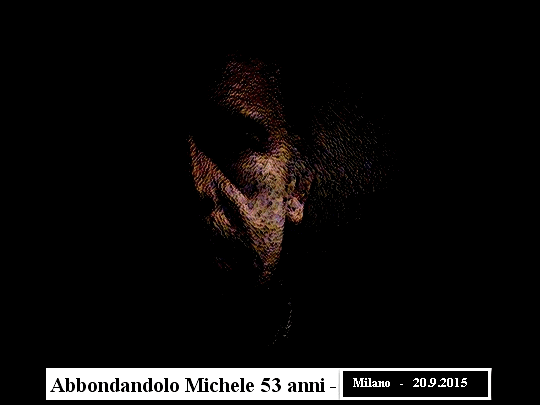
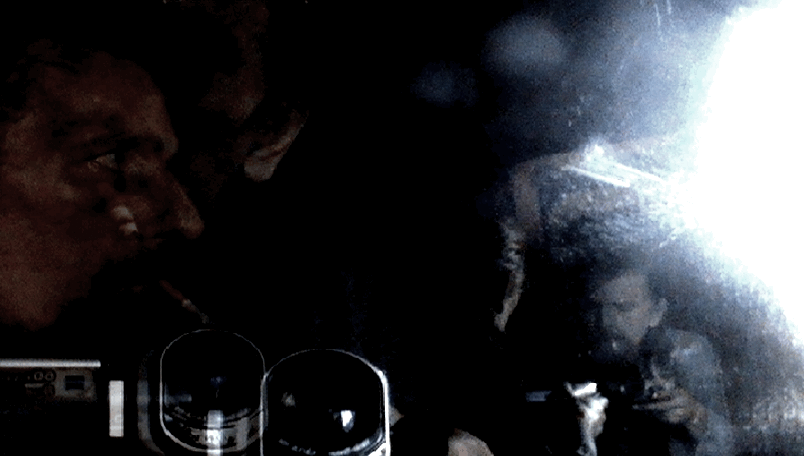
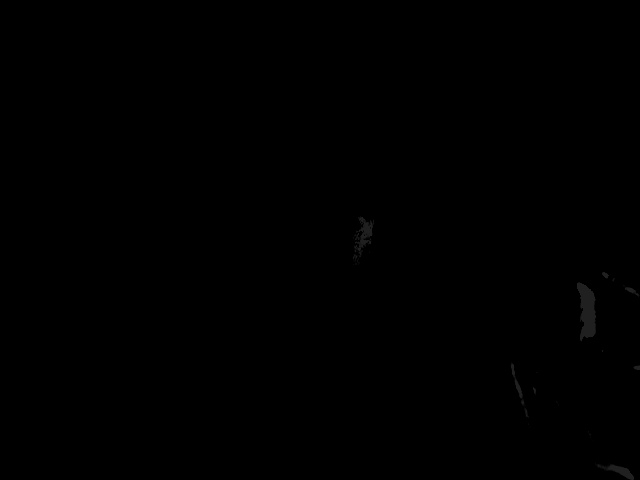
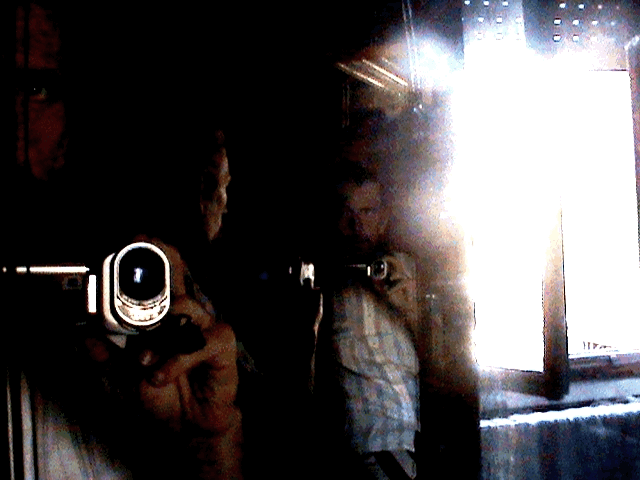
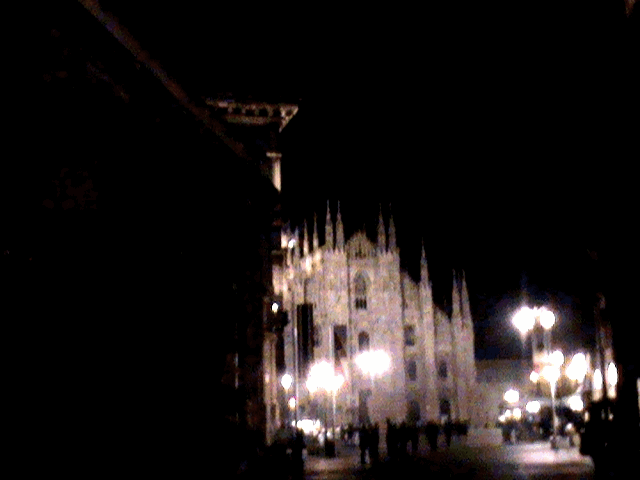
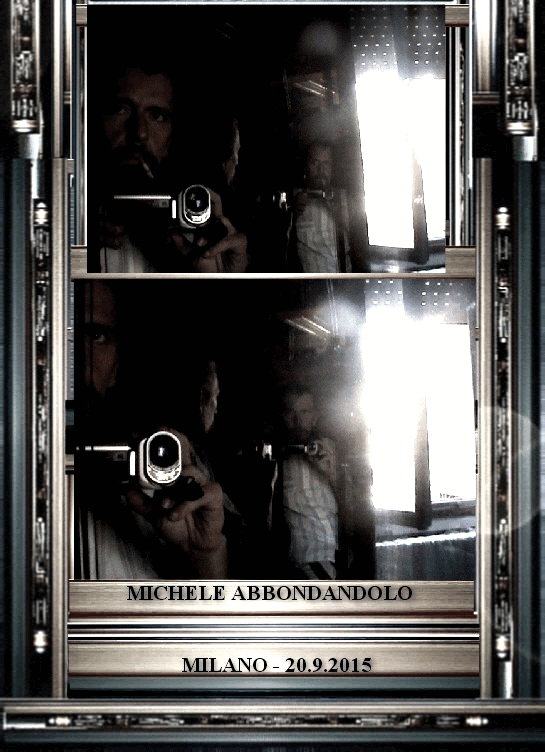


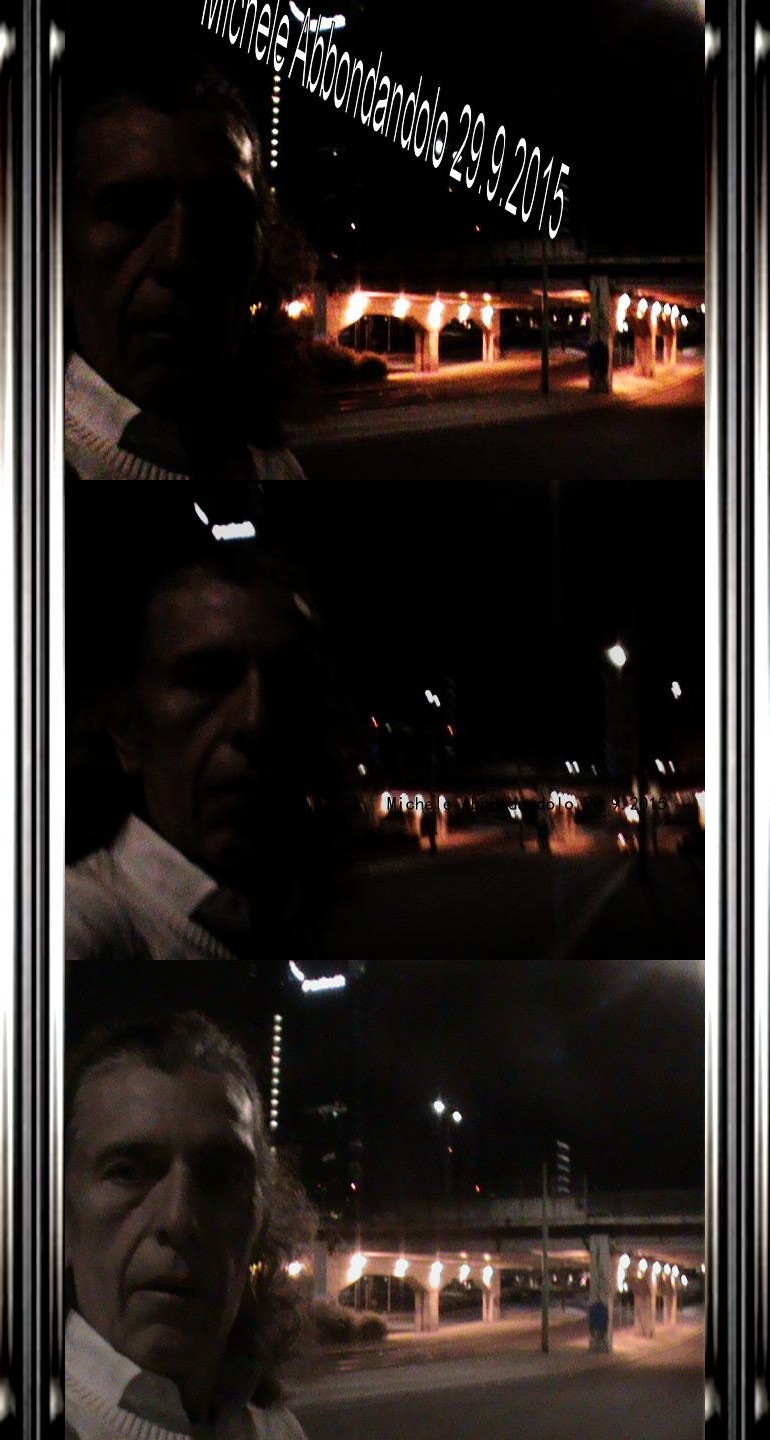

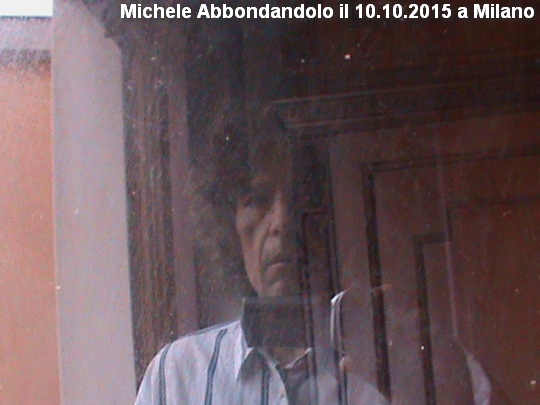


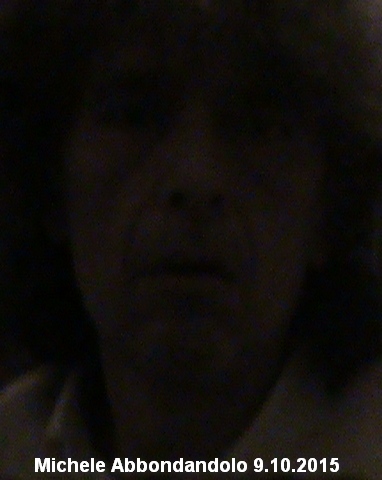
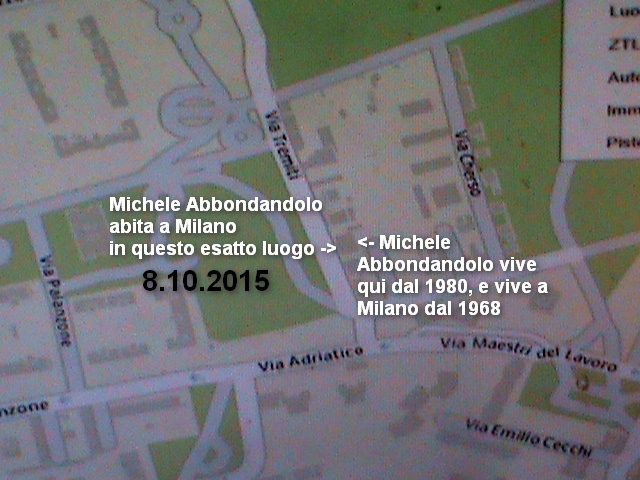
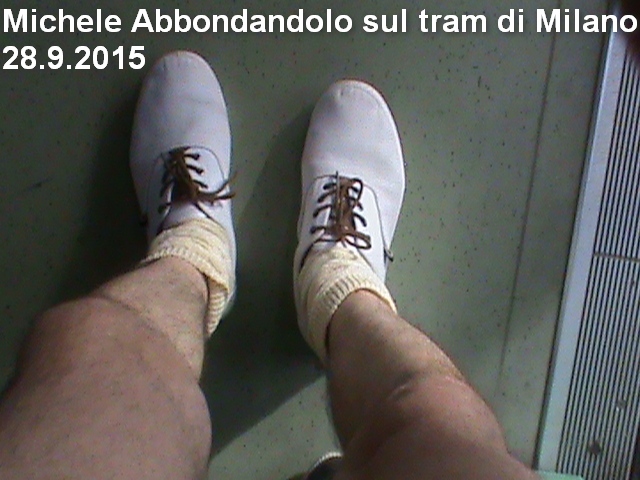 Dal 2001 bulldog per accoppiare 365 g. su 365 a Milano.
Dal 2001 bulldog per accoppiare 365 g. su 365 a Milano.
 per cui sul sito belle fotografie dei quartieri di Milano dove uso stare.
1) P. Duomo, pure il 24.12 2) altri quartieri di Milano.
per cui sul sito belle fotografie dei quartieri di Milano dove uso stare.
1) P. Duomo, pure il 24.12 2) altri quartieri di Milano.
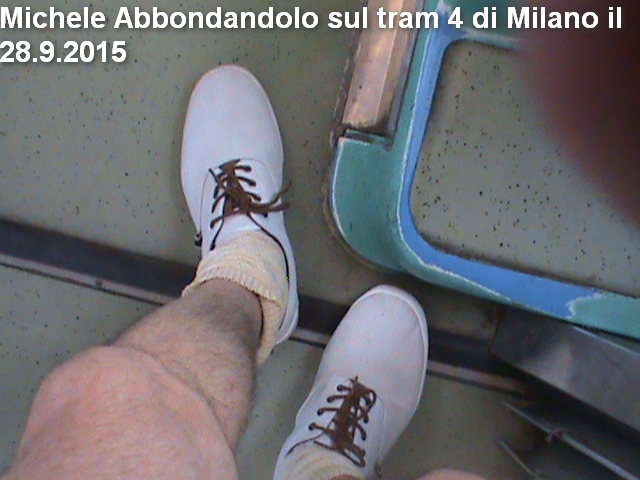
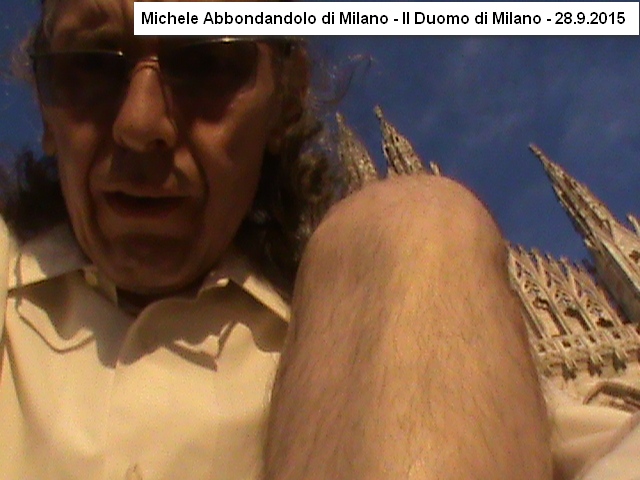
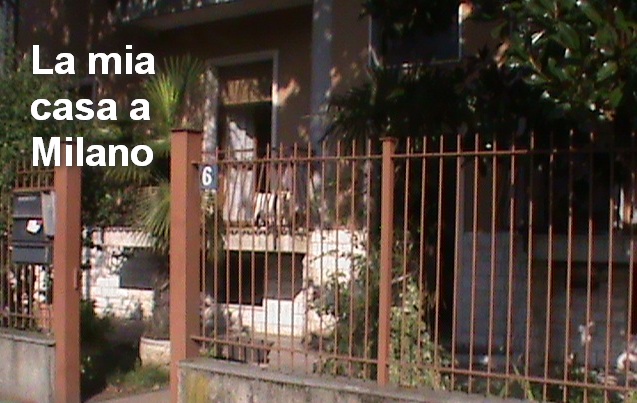
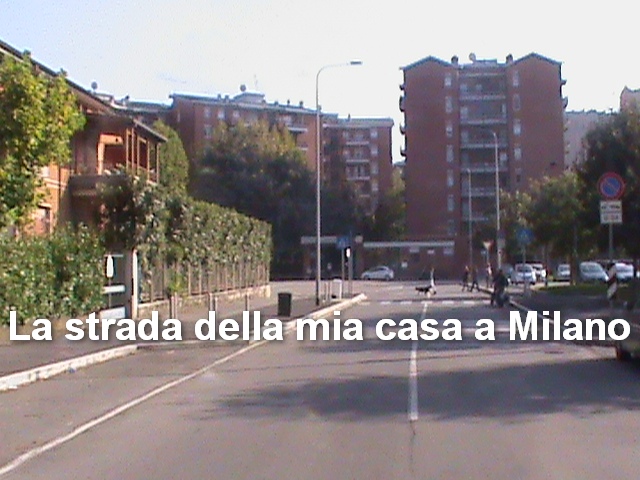
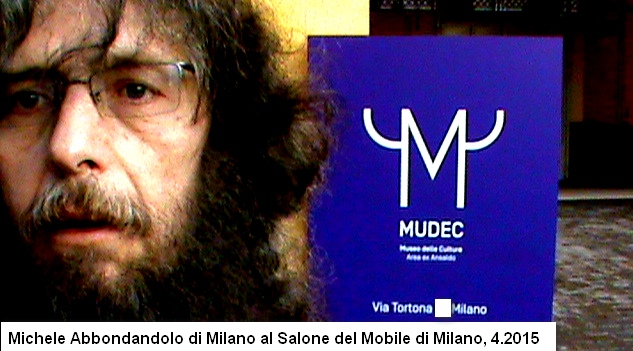
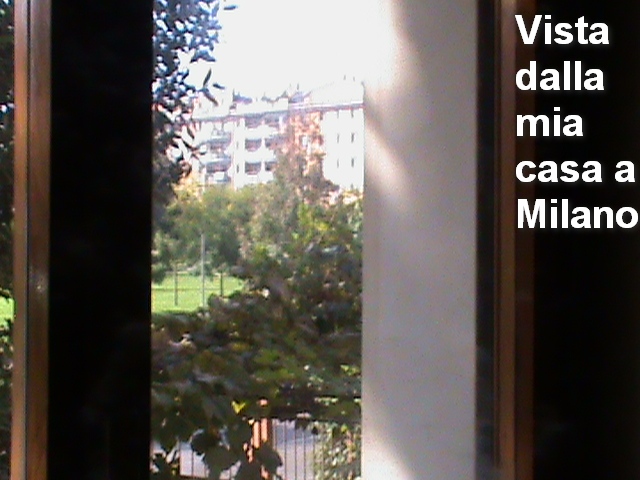
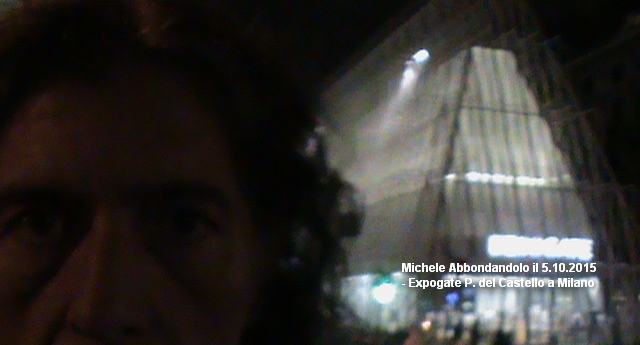
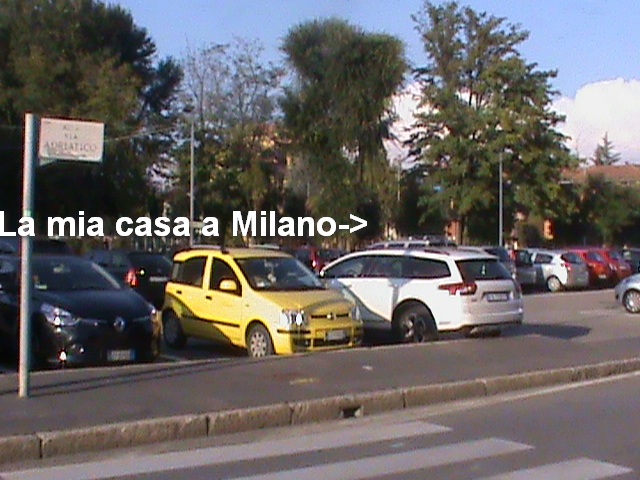
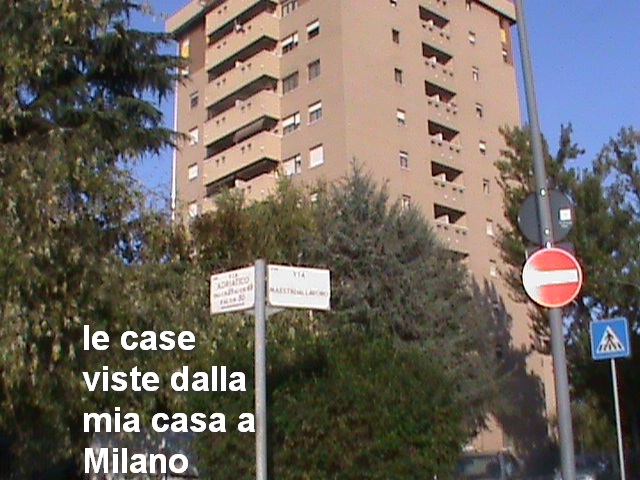
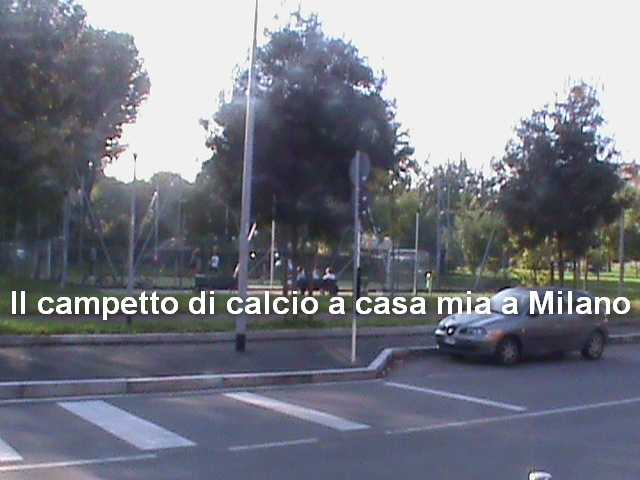
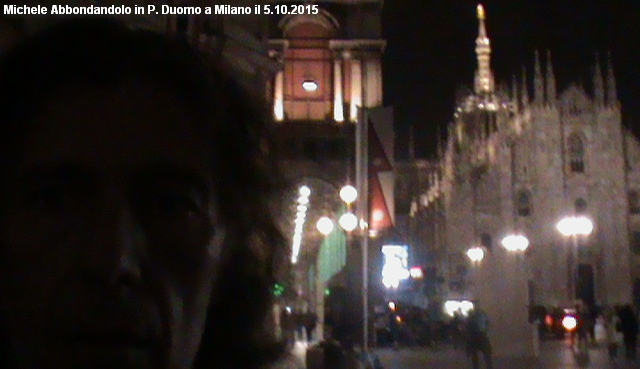

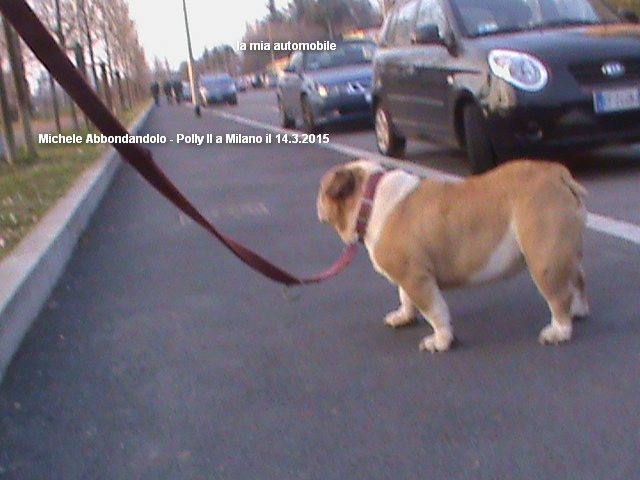

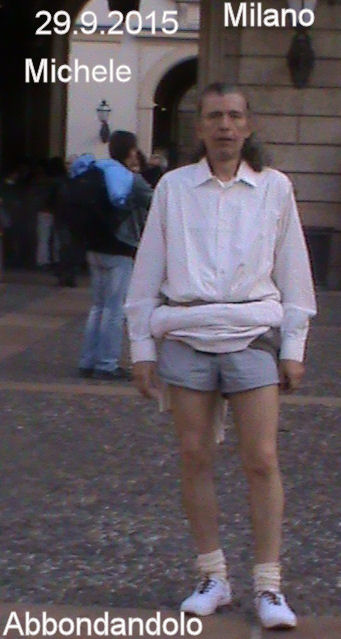




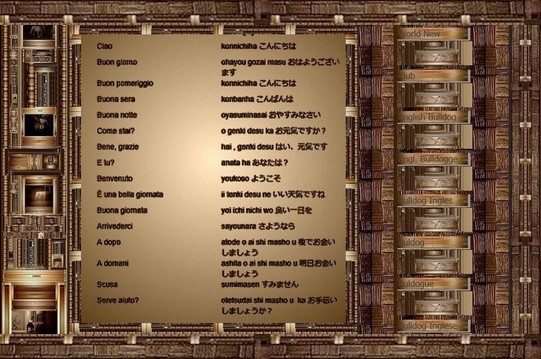

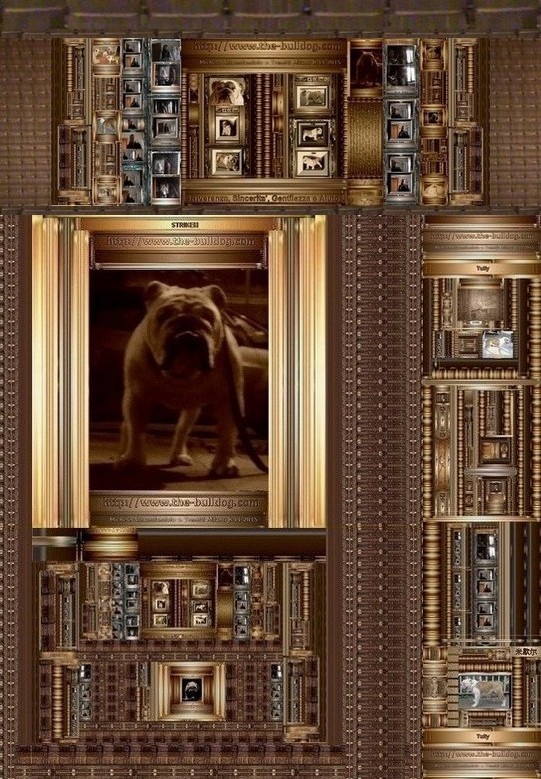

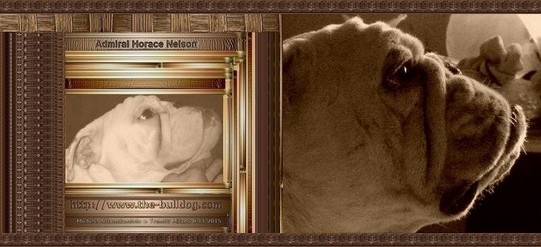
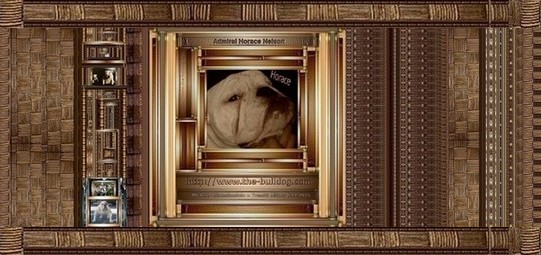
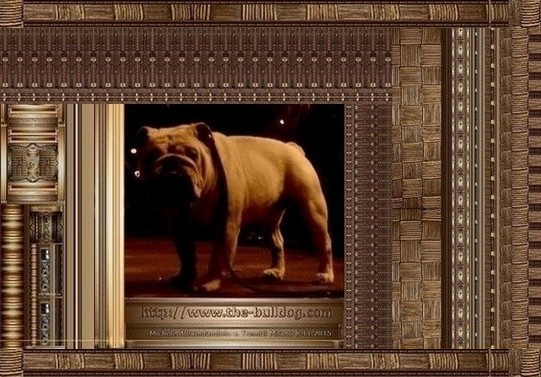
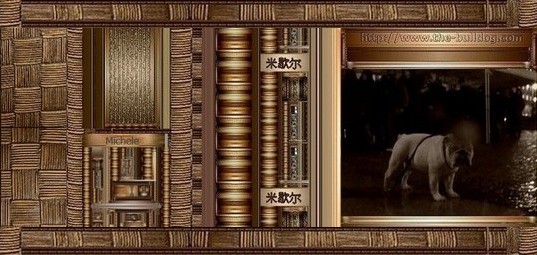


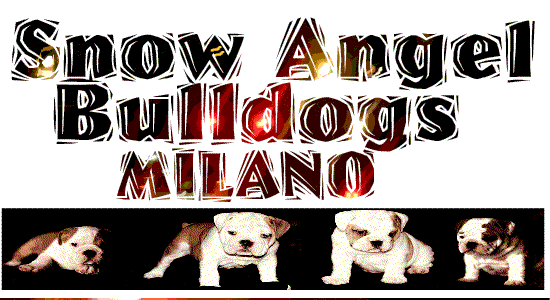
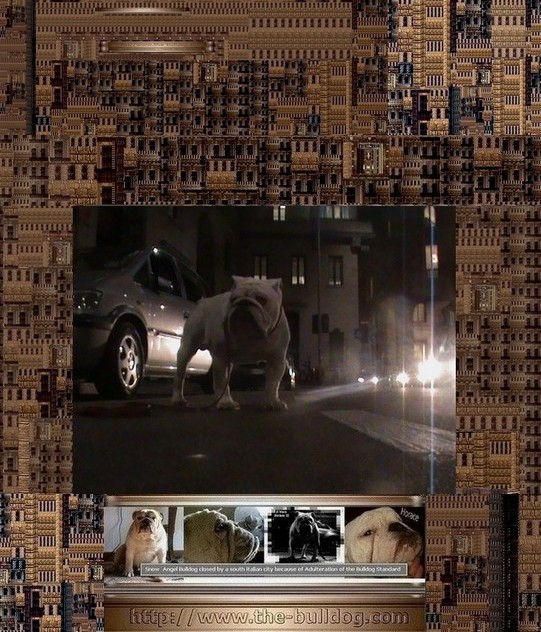
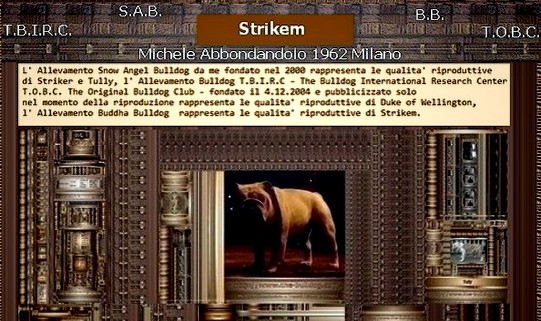 Happy Halleween 2023.
Happy Halleween 2023.
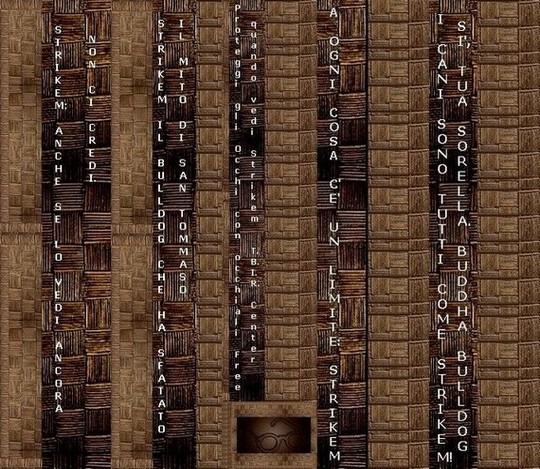

Webmaster Mike Va Ur, July 4, 1962.
- 2023 - Sept - 29.
-
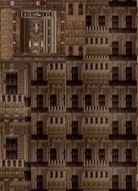
-


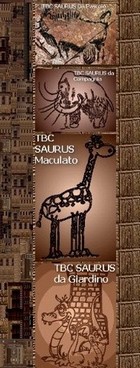
-
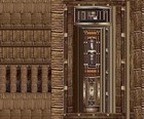


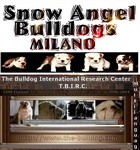 ___Homepage
___Homepage
 ___Languages
___Languages
 ___Mike Va Ur
___Mike Va Ur


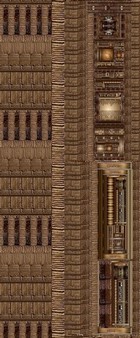

- Russian Borzoi
-

- Russian Dogs
-

-
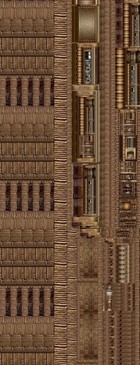


- Chinese Dogs
-

- Chinese Breeds
-

- Chinese Dog
-

- Chinese Dogs
-

- Chinese Breed
-
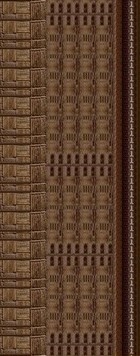
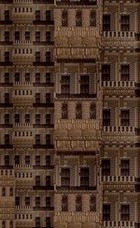
-

- China Dog
-

- Chinese Breedings
-

- China Dogs
-

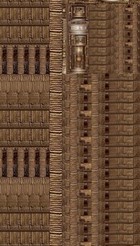
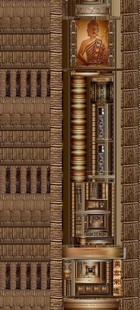
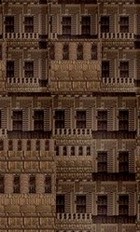
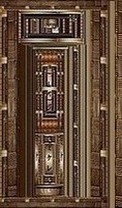
-

- Pug Dogs
-


-

- Breeds From China


-

- Chinese Breed
-

- Chinese Art
-
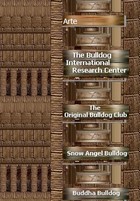
-

- Original Pug
-

- Guard Dogs
-

- Milano



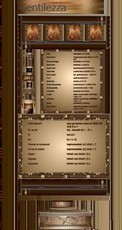
-




- British Bull

- World News
-

- Club


- Idioma
-

- English Bulldog
-

- Bulldog Ingles
-

- Buldog
-

- Buldogue
-

- Bulldog Inglese
-

- Bulldog Anglais
-

- ___Japam
-

- Abruzzo
-

- Basilicata
-

- Calabria
-

- Campania
-

- Friuli
-

- Emilia Romagna
-

- Lazio
-

- Liguria
-

- Lombardia
-

- Marche
-

- Molise
-

- Piemonte
-

- Puglia
-

- Sardegna
-

- Sicilia
-

- Toscana
-

- Trentino
-

- Umbria
-

- Veneto
-

- Val D'Aosta
-

-

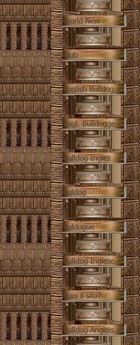
-

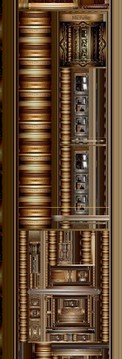
-

- Maculato
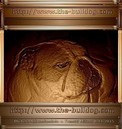
- __Killed by Law
-

- __Zed Garish
-

- the-bulldog.com
-


-

-

- Vuoi il sito?
-

- Robin Hood
-

- Strike
-

- Tully
-

- Jubilant
-

- Winston
-

- Little john
-

- Lord byron
-

- Polly

-
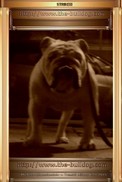
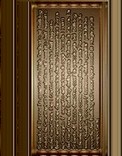
-
Mike Va
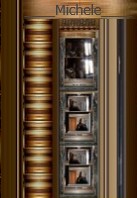
-

- ____Grafica

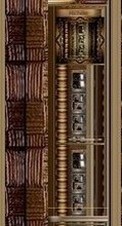 ____Html
____Html